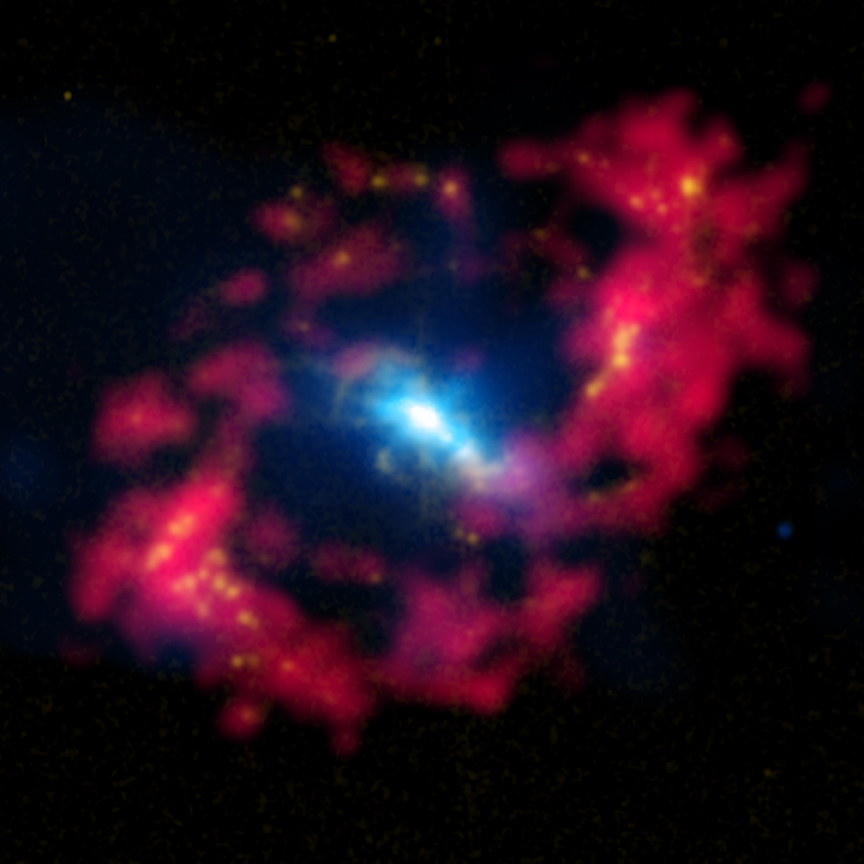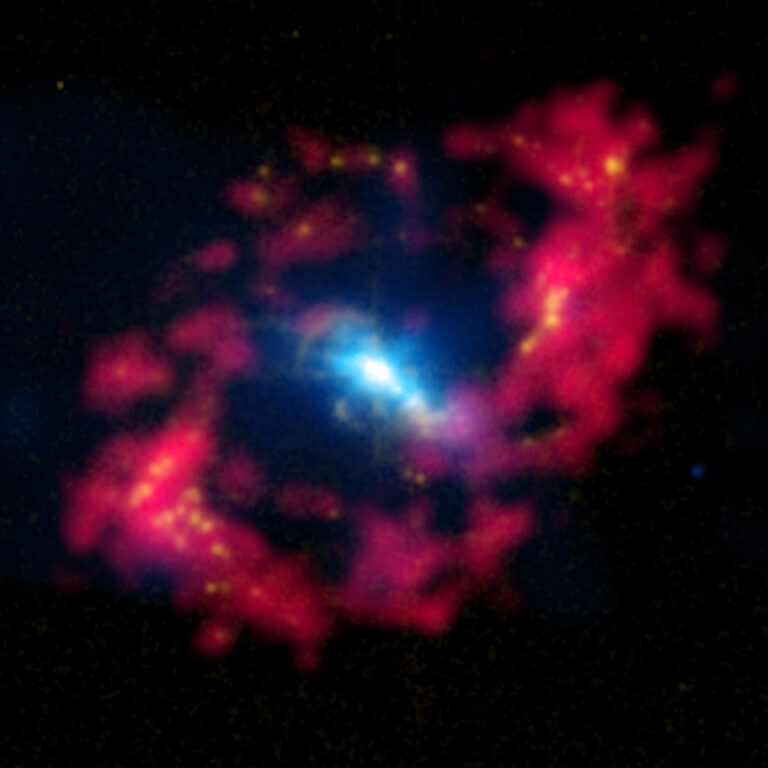Quantifying the Masses of Black Holes in Galaxies
Black holes, one of the most amazing and bizarre predictions of Einstein’s theory of gravity, are irresistible sinks for matter and energy. They are so dense that not even light can escape from their gravitational clutches. Massive black holes, containing millions to billions of solar masses of material, reside at the centers of most galaxies including our own Milky Way. Although black holes are dark, their masses can be measured quite precisely from their gravitational influence on stars and other matter.

spiral galaxy NGC 4151. In the pupil of the “eye,” X-rays (blue) from
Chandra are combined with optical data (yellow) showing positively
charged hydrogen. The red around the pupil reveals neutral hydrogen
detected by radio observations. A study has shown that the X-ray
emission was likely caused by an outburst powered by the supermassive
black hole located in the white region in the center of the galaxy.
Evidence for this idea comes from the elongation of the X-rays running
from the top left to the bottom right and details of the X-ray spectrum.
Astronomers have done just that over the past few decades by looking at the way gas around a nucleus moves under the influence of the massive black hole. The results on dozens of galaxies so far have shown that black hole sizes can be reliably estimated with this technique. It is not always easy, however, to separate the light around the nuclear region from the rest of a galaxy’s starlight in order to measure this moving gas.
SAO astronomers Martin Elvis and Margarita Karovska, together with five colleagues, have devised a new technique that takes advantage of the fact that the infrared luminosity of the gas also depends on its motion, and so also provides a measure of the black hole mass. They find from a sample of fourteen previously measured galaxies that the infrared observations give very good agreement with other techniques. Since infrared observations can in many situations be easier to obtain, the new technique will allow black hole measurements to be extended to many other galaxies.
This article is republished from PhysORG under a Creative Commons license. Read the original article.*
Do not forget to share your opinion with us to provide you with the best posts !




0 Comments